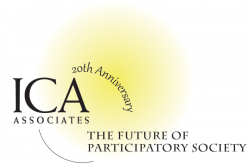Regional Health Centre Strategic Plan
Request by the organization
A new hospital board and senior management staff wanted to assure themselves and the community that big changes mandated in the hospital would not affect the same care and compassionate service that had been available in the past. The strategic plan was explicitly about a transformation from being a hospital into becoming a district health centre with added emphasis on prevention, wellness and public education. The stakeholders knew very well from experience how to run a hospital and wanted a strategic plan that would put them on the right course for long term future as a district health centre. They were open to whatever would emerge from the plan to .
The Situation and Factors at Play
This small town hospital was undergoing two major changes at once. The first change was the shift of the hospital from being a Roman Catholic-run organization to becoming a public institution. This was happening because the Roman Catholic religious order that had opened the hospital and served the population over many decades was stepping back after having trained local professionals to take over the administration of the hospital and care of the patients. The second shift was from being a hospital which mainly helps sick and injured people, to becoming a regional health centre with a much larger mandate including wellness, education and even prevention.
For many decades the population, which had great trust in the religious order, was able to leave hospital staffing and administration to people whom they knew to be guided by care and compassion. With the shift to becoming a public institution a new set of values, especially financial ones, were added to mix.
Hospitals attract loyalty and commitment from the surrounding population because of the intensity of the experience that people have with them. Hospitals have to shift the services they offer as the community changes with age, with growth or decrease in population and from technological changes. Hospitals are generally slow to make changes because of the expensive infrastructure needed, the training and new staff, and the difficulty and expense of attracting staff. Canadian hospitals, due to the nature of their public funding, have even more hurdles because of additional layers of bureaucratic and occasionally political management.
Planning
The strategic planning process included 31 people; 12 board members of the hospital, 11 management staff, and 8 people representing partnering organizations. The board members were a very good representation of the small rural area, so there was no need to hold public sessions beyond the thirty involved in strategic planning process itself. The management team had done some data gathering in advance and had given the board members briefing notes about current programs, services and government mandates, so that the whole group could launch straight into the participatory process. The planning process itself was held during a three day session including Friday night, all day Saturday and again on Sunday morning, and included an historical scan, a visioning session, contradictional analysis, a strategies workshop with phasing of strategies, and an action planning workshop. The draft of the documentation was sent to the client within three weeks. The staff took the results and did further implementation planning.
Results and impact
The plan was created eight years ago and there have been three different CEOs since that time. Fortunately the current Chief Executive Officer was present at the planning session (the new Chief Nursing Officer at that time) and was able to reflect on the results of the plan eight years later. According to him about 70% of the long range practical vision has been realized.





